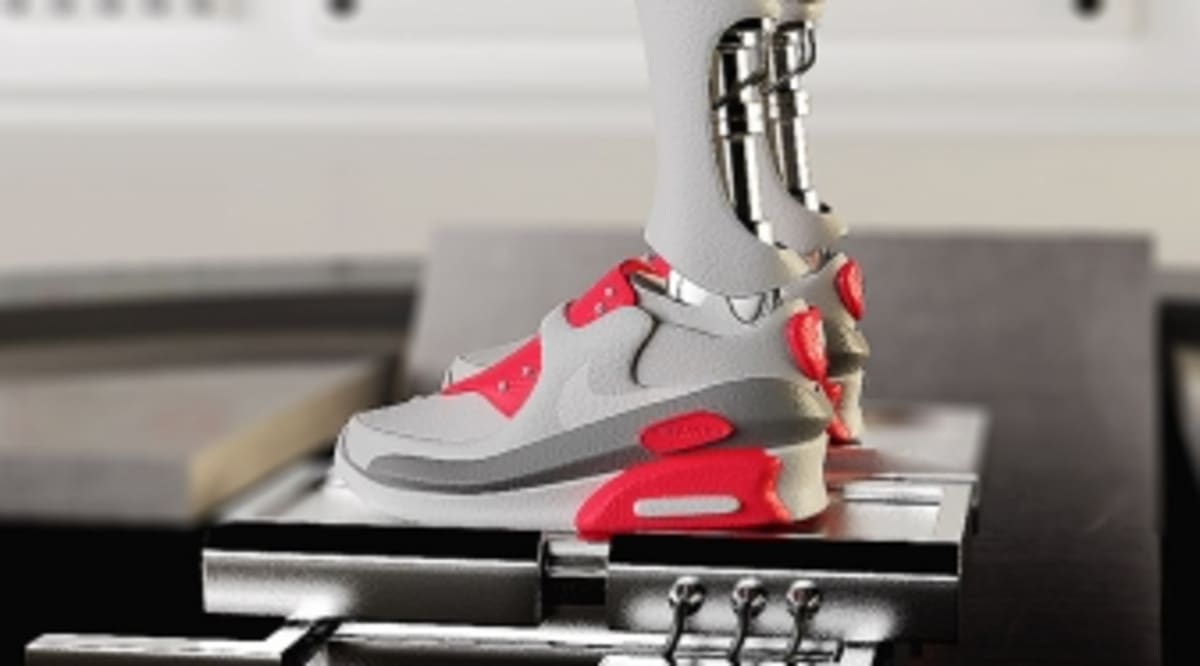Obstacles To Robotic Automation In Nike Sneaker Production

Table of Contents
High Initial Investment Costs and ROI Uncertainty
Implementing robotic automation in sneaker manufacturing requires a substantial upfront investment. The high initial costs associated with robotic systems, specialized software, and the necessary integration pose a significant barrier to entry for even a company as large as Nike. This includes not only the purchase price of sophisticated robotic arms and advanced vision systems but also the ongoing expenses of skilled technicians for programming, maintenance, and repair. These costs can quickly escalate, potentially leading to lengthy payback periods that may not be justifiable compared to traditional manufacturing methods.
- Expensive robotic arms and vision systems: State-of-the-art robots capable of handling the delicate materials and intricate processes involved in sneaker production come with a hefty price tag.
- Need for skilled technicians: Programming, maintaining, and repairing these complex robotic systems requires specialized expertise, adding to the overall cost.
- Long payback periods: The return on investment (ROI) for robotic automation in sneaker production is difficult to predict accurately due to various factors, including technological advancements and market fluctuations. This uncertainty can make it challenging to justify the significant upfront investment.
The substantial financial commitment required for implementing robotic automation can be a major deterrent for Nike, especially considering the potential risks involved. A thorough cost-benefit analysis, incorporating potential risks and technological advancements, is crucial before committing to large-scale automation.
Complexity of Sneaker Manufacturing Processes
Sneaker production is not a simple assembly-line process. It involves a complex series of intricate tasks requiring dexterity, adaptability, and a high degree of precision, many of which are currently beyond the capabilities of most robots. Handling diverse materials like leather, textiles, and rubber, each with varying properties and thicknesses, adds another layer of complexity. The nuanced nature of assembling and finishing a shoe, involving precise stitching, gluing, and quality control, poses a substantial challenge for complete automation.
- Precise stitching and gluing: The intricate stitching and gluing of various components require a level of dexterity and precision that is difficult for robots to replicate consistently.
- Adapting to material variations: Robots struggle to adapt to variations in material properties and thicknesses, which can affect the assembly process and final product quality.
- Handling delicate materials: Many sneaker components are delicate and require careful handling to avoid damage; a challenge for the comparatively forceful actions of many robotic systems.
The nuanced nature of sneaker manufacturing, involving complex assembly and quality control steps, presents a substantial hurdle for complete automation. Current robotic technology struggles with the level of precision and adaptability needed for consistent, high-quality production.
Lack of Robust and Adaptable Robotics Technology
A major obstacle to widespread robotic automation in Nike's sneaker production is the current limitations of robotics technology itself. Existing robotic systems often lack the dexterity and adaptability needed for the fine motor skills required in sneaker assembly. They struggle to handle unpredictable variations in materials and processes, and seamless integration of different robotic systems remains a challenge. Furthermore, the lack of robust sensory feedback mechanisms limits the robots' ability to adjust to variations and maintain precision.
- Limited capacity to handle unpredictable variations: Robots often struggle with inconsistencies in material properties and assembly processes.
- Challenges in system integration: Integrating different robotic systems seamlessly for a complete automated production line is complex and technologically demanding.
- Need for better sensory feedback: Improved sensory feedback mechanisms are crucial for enhancing robotic dexterity and enabling more precise and adaptable movements.
Advancements in AI, machine vision, and robotic dexterity are crucial for overcoming the complexities of sneaker production. More sophisticated AI and machine learning algorithms are needed to enable effective problem-solving and adaptation in unpredictable situations.
Workforce Displacement and Social Implications
The implementation of robotic automation in Nike's factories raises significant ethical and social concerns, primarily related to potential job displacement. While automation can improve efficiency, it could also lead to job losses in manufacturing facilities, potentially having a negative impact on factory communities and workers' livelihoods. Addressing these concerns requires proactive measures such as retraining and upskilling programs to help displaced workers transition into new roles.
- Potential negative impact on factory communities: Job losses due to automation could have significant economic and social consequences for communities dependent on Nike's manufacturing facilities.
- Need for responsible implementation strategies: Nike needs to develop responsible implementation strategies to minimize job displacement and ensure a just transition for its workforce.
- Ethical considerations: Replacing human workers with robots raises ethical questions about fairness, responsibility, and the social impact of technological advancements.
The societal implications of widespread automation must be addressed proactively to ensure a just transition for affected workers and communities. Investing in retraining and upskilling programs is essential to mitigate the negative impacts of automation on the workforce.
Quality Control and Defect Detection
Maintaining the high quality standards associated with Nike products is paramount. Ensuring consistent quality and detecting defects in automated sneaker production presents a significant challenge. While robots can perform repetitive tasks, human inspectors still possess superior visual inspection skills and problem-solving abilities, particularly when it comes to identifying subtle defects or inconsistencies.
- Development of sophisticated quality control systems: Advanced quality control systems are needed to ensure high-quality output from automated production lines.
- Need for improved robotic vision: Better robotic vision systems and AI-based defect detection algorithms are crucial for automated quality control.
- Balancing automation with human oversight: A combination of automated processes and human oversight may be the most effective approach to maintaining high quality standards.
Achieving consistent, high-quality output in a fully automated environment requires significant advancements in robotic vision and AI-based defect detection. A balanced approach that combines automation with human oversight for quality assurance may be necessary in the near term.
Conclusion
While robotic automation offers potential benefits for Nike's sneaker production, such as increased efficiency and consistency, significant obstacles remain. High initial investment costs, the complexity of sneaker manufacturing processes, technological limitations, social implications, and quality control challenges all contribute to the slow adoption of full automation. Overcoming these obstacles will require substantial investment in research and development, along with a thoughtful and responsible approach to implementation. The future of robotic automation in Nike sneaker production will depend on continued innovation and a careful consideration of the economic, social, and ethical implications. The responsible and strategic adoption of robotic automation in Nike's production will be key to navigating these challenges and realizing the potential benefits of this technology.

Featured Posts
-
 Post Roe America How Otc Birth Control Reshapes Reproductive Healthcare
Apr 22, 2025
Post Roe America How Otc Birth Control Reshapes Reproductive Healthcare
Apr 22, 2025 -
 Us South Sudan Collaboration On The Repatriation Of Deportees
Apr 22, 2025
Us South Sudan Collaboration On The Repatriation Of Deportees
Apr 22, 2025 -
 Stock Market Volatility Investors Confronting Increased Pain
Apr 22, 2025
Stock Market Volatility Investors Confronting Increased Pain
Apr 22, 2025 -
 Bezos Blue Origin Vs Katy Perry Comparing Public Perception After Setbacks
Apr 22, 2025
Bezos Blue Origin Vs Katy Perry Comparing Public Perception After Setbacks
Apr 22, 2025 -
 Are La Landlords Price Gouging After The Recent Fires
Apr 22, 2025
Are La Landlords Price Gouging After The Recent Fires
Apr 22, 2025
